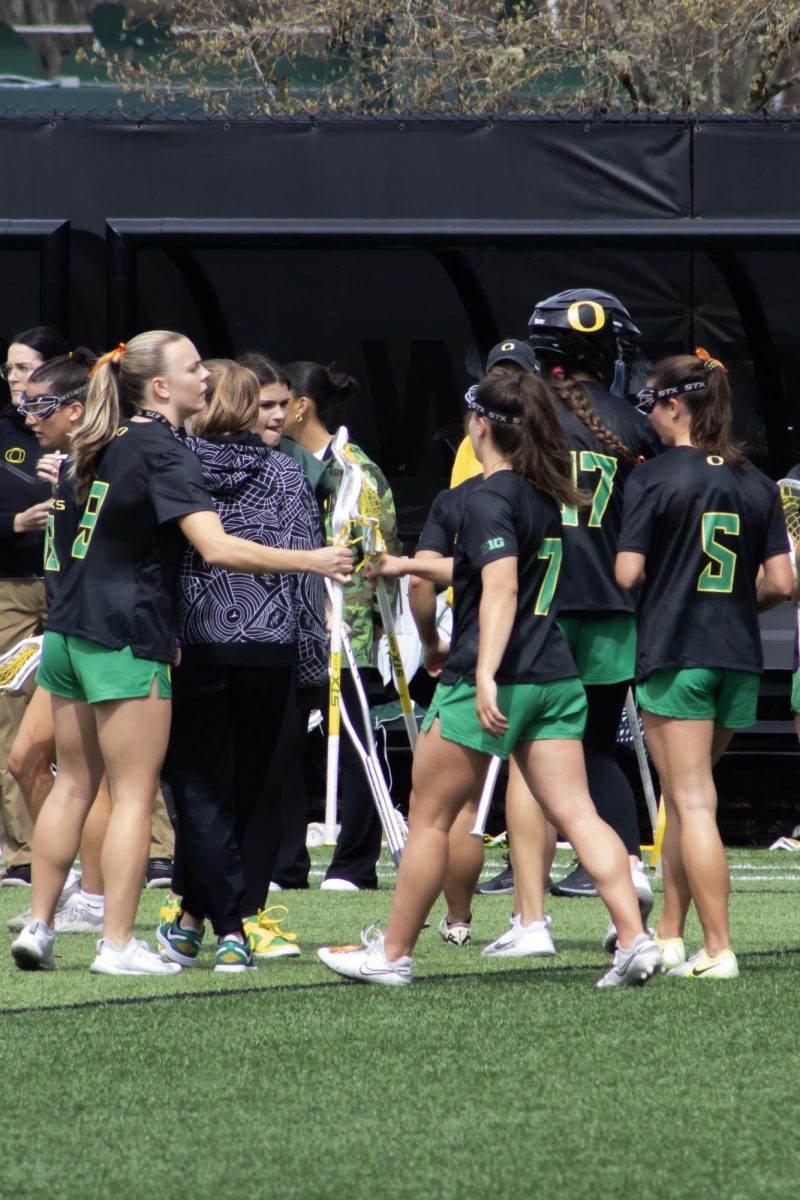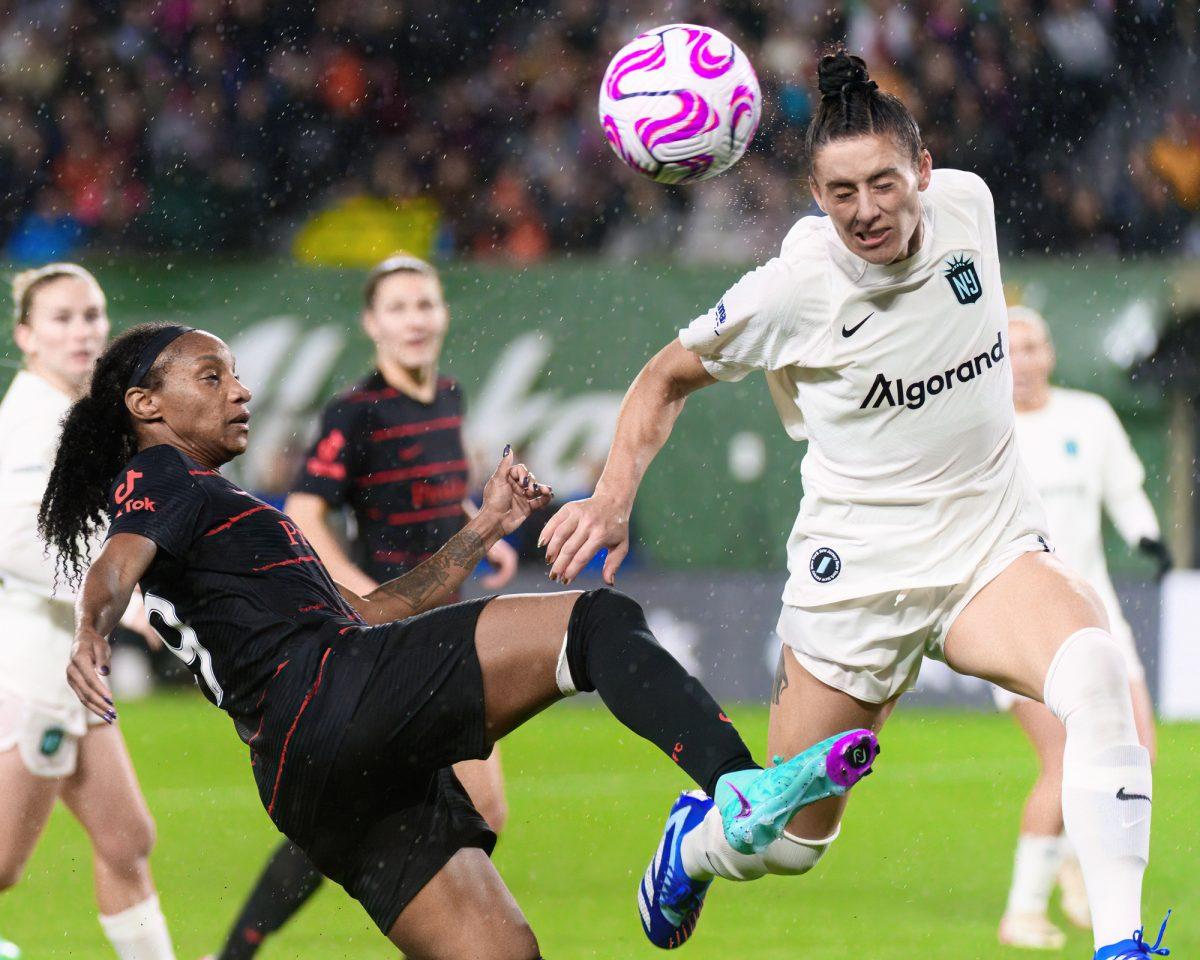Opinion: Student-athletes deserve a more well-rounded college experience that prepares them for life after sports.
———-
By the time they graduate, many ambitious college athletes have been defined by sports for up to half their lives. That leaves the vast majority — student-athletes who don’t go pro — to grapple with the unexpected crisis of early retirement from the very thing that gave them identity and security.
Competitive young athletes have one goal of making it big and playing college athletics. Throughout their youth, they have spent thousands of hours training. They put most other aspects of their lives on the back burner in pursuit of collegiate athlete status.
But, upon arrival to college, these athletes inevitably face a crushing new reality. Less than 2% of NCAA college athletes go on to play professionally. This leaves us questioning the paths the remaining 98% must take as they learn to exist outside their previous “athlete” identity.
“Identity loss is what I call it,” Jaleel Kindell, a former D1 multisport athlete and the University of Oregon’s current coordinator of student-athlete development, said. “It’s the most devastating thing for an athlete and it’s inevitable.”
Kindell works with all the 493 student-athletes at Oregon out of the university’s total undergraduate enrollment of 19,568 students. Kindell leads a mentorship program and acts as a career coach who meets with athletes to present internships and career opportunities outside their sport.
“In sports, when I was around, there was no one to develop us off the field. My coaches literally only talked about football. That’s it,” Kindell said. “Once you left the football building, you were on your own. My track coaches in college, they only cared about if I was running fast. They did not care how I was doing personally. Mental health, career-wise, I was on my own.”
Today, many universities have worked to improve academic resources for their athletes, providing tutoring services, internship and career advising and support centers such as UO’s John E. Jaqua Center for Student Athletes.
Brison Cobbins, a current running back in the UO football program, feels academically supported by UO but still acknowledges the possible difficulties of the transition he and his teammates may face if they don’t play at the next level.
“You can get used to being on a daily schedule. Being told what to do and when to do certain things, and then after college if you’re not playing, you’re just not on that schedule anymore,” Cobbins said. “So then, it’s kind of like you have to tell your own self to do those things. You have to want to do it and I mean, it kind of goes down to that individual at that point.”
Cobbins explained that, while he hopes to play professionally, he also has other dreams of working at Nike. While he currently feels optimistic about his future, he sees how a change in routine may impede immediate success for athletes when they leave their sport.
“It could be an issue because you get used to like going, going, going every day with whatever sport it is that you play and the different stuff it requires,” Cobbins said. “But when you get into the afterlife of the sport, I see how it could be hard. That feeling of being used to, you know, doing stuff all the time and now it’s kind of like I have nothing to do.”
For student-athletes, the demanding routine gives them mental stability throughout college, from mandatory workouts to the belonging they feel just from being a part of a team culture and having coaches.
So, despite the newer academic and career resources universities are providing, Kindell still believes collegiate athletes will continue to face difficulties similar to his as they graduate from their sport.
Specifically, the mental instability that comes with moving on from a college career. While he always aims to check on his students’ mental well-being, Kindell fears that the lack of attention on this issue leaves many in the dark.
While athletic accolades are the ultimate goal for many of these students, you cannot discount the benefits of camaraderie. College athletes’ love for their sport is deeply intertwined with the people surrounding them. Kindell explains that when there is no longer the accountability from someone telling you to work out, and the built-in friendships have vanished, the former athletes often struggle.
Sean Brown, a former college football player, was a starter at tight end for the University of Colorado, Boulder’s 1990 National Championship team.
From a young age, Brown was on what seemed to be a direct path toward playing professionally. He dominated every sport he played, and his family and coaches also believed he was destined for the pros. However, with long odds for even the most elite college athletes, Brown ultimately was not drafted by the NFL. Now, 30 years removed from his college career, Brown reflects on the difficulties of his life after reaching the pinnacle of college athletics success.
“I was definitely thinking in the now and the reason why I was thinking in the now so much was because I was always a good player and pretty much had been here since I was a kid,” Brown said. “So really, there was nobody who could have told me that I wasn’t gonna be playing professionally in either baseball or football.”
Brown ultimately still graduated from CU Boulder with a degree in communications. He feels that, despite the rigor of his athletic schedule, there was no excuse for him not getting his degree because of the academic resources his school’s athletic department provided him with.
However, Brown struggled the most with the mental aspect of the shock that he would not go on to play professionally. The true hardships came after his graduation.
“Well, [I] actually was kind of in shock. I was in shock because I wasn’t playing anymore, and to be honest with you, I kind of went through depression for about maybe a good two years or so,” Brown said.
While Brown had set himself up with his degree, nothing had prepared him for the mental fallout from losing his sport. When Brown was experiencing depression, mental health was also not a commonly discussed subject, so the isolation and confusion about his emotions were suffocating at the time.
“You know, I definitely worked, but I wasn’t doing a career job at that time. I was just working odd jobs here and there, and it took me a while to actually get things together and find myself again,” Brown said. “But for those first two years, it was pretty rough. I couldn’t watch football and I was mad. I was mad at the game.”
No coaches or athletic advisors had warned Brown about the comedown of a college athletic career. But then again, as Brown said, “coaches are trying to stay on your good side and tell you what you want to hear. Not what you need to hear.”
Similar to Kindell’s sentiments, Brown blames a bulk of the mental fallout on the absence of structure and accountability in his life when sports were over. From the second he stepped foot on campus, Brown was told when to work out, what classes to take and even what to eat by the athletic staff.
“Once I graduated, I suddenly didn’t know how to do so many things on my own. Nothing had prepared me for how to physically and mentally take care of myself once football was gone,” Brown said. “I was so depressed, and I was gaining weight because I didn’t even know how to exercise without the motivation of my coaches.”
The root of many problems these former athletes face when they leave behind their sport is the lack of preparation for the real world given to them by their athletic department and collegiate institutions. This is an ironic problem for institutions explicitly dedicated to preparing students for life.
While many see the plush benefits given to student athletes, from the ultramodern facilities to scholarships, they ignore the disservice many institutions do to them. These benefits give them temporary elevation and comfort. However, they aren’t afforded the same time for career and academic readiness, or independent development, that the majority of the student body is given.
The rigorous schedule of college athletics does provide structure, but it also limits other forms of growth like academic exploration and pursuit of interests outside of sports. College coaches and families are highly invested in their student’s athletic success, but few garner the same enthusiasm for outside pursuits.
While everybody may think they are going pro, many student-athletes are in desperate need of a reality check. However, the problem lies in the fact that it’s not in the best interest of the institution of collegiate athletics to prepare the student-athletes for the harsher realities of post-grad, and in turn, they will continue to benefit off the dreams of these students with little regard for the individual.
Cossette: UO athletes are students too
October 27, 2023
The Oregon football team rushes out of the tunnel prior to kickoff. The Oregon Ducks take on the University of Utah Utes at Autzen Stadium in Eugene, Ore., on Nov. 19, 2022 (Maddie Stellingwerf/Emerald)
0
More to Discover
About the Contributor
Sophia Cossette, Opinion Editor








